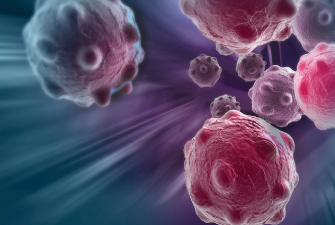SNMMI Provides Guidance on Appropriate Use of Lu-177 PSMA-617 Radionuclide Therapy
 The Society of Nuclear Medicine and Molecular Imaging has released a consensus statement that provides standardized guidance for the selection and management of metastatic castrate-resistant prostate cancer (mCRPC) patients being treated with 177Lu-PSMA radionuclide therapy. The statement also reviews current clinical struggles physicians face during treatment with 177Lu-PSMA-617 radionuclide therapy.
The Society of Nuclear Medicine and Molecular Imaging has released a consensus statement that provides standardized guidance for the selection and management of metastatic castrate-resistant prostate cancer (mCRPC) patients being treated with 177Lu-PSMA radionuclide therapy. The statement also reviews current clinical struggles physicians face during treatment with 177Lu-PSMA-617 radionuclide therapy.
To develop the patient selection criteria and determine appropriate use scenarios, SNMMI assembled an autonomous workgroup to represent a multidisciplinary panel of health care providers with substantive knowledge in the use of nuclear medicine in 177Lu-PSMA-617 radionuclide therapy. The workgroup conducted a review of the four prospective phase 2 and phase 3 trials that used 177Lu-PSMA-617 registered on clinicaltrials.gov to develop consensus recommendations.
In terms of patient selection, workgroup members agreed that PSMA PET should be performed within three months of treatment or since progression on the last therapy to ensure that the current disease state is represented. If disease progression or intervening therapy is evident, PSMA PET should be repeated. Either 18F-DCFPyL or 68Ga-PSMA-11 can be used for PSMA PET imaging, and 18F-FDG PET is not required as a standard patient selection tool. In addition, patients should be imaged with either contrast-enhanced CT or MRI to identify potential PSMA-negative disease. Baseline requirements for renal and bone marrow functions were also noted.
Treatment of mCRPC after chemotherapy and ARPI was considered appropriate, while treatment of mCRPC after ARPI and before chemotherapy was considered rarely appropriate. The working group also agreed that treatment of patients with metastatic castration-sensitive prostate cancer was rarely appropriate.
Furthermore, the consensus statement addressed current clinical struggles that physicians face when administering 177Lu-PSMA-617 radionuclide therapy. These include the role of androgen receptor-targeted therapies, the role of 223Ra, treatment-related toxicities, when to consider cessation of treatment, exceptional responders and restarting treatment, and imaging during treatment.
“With the approval of 177Lu-PSMA-617, a new class of therapeutics is available to patients with prostate cancer. We look forward to the potential use of PSMA radionuclide therapy in pre-chemotherapy mCRPC or other settings pending the full results of ongoing trials,” noted the authors.